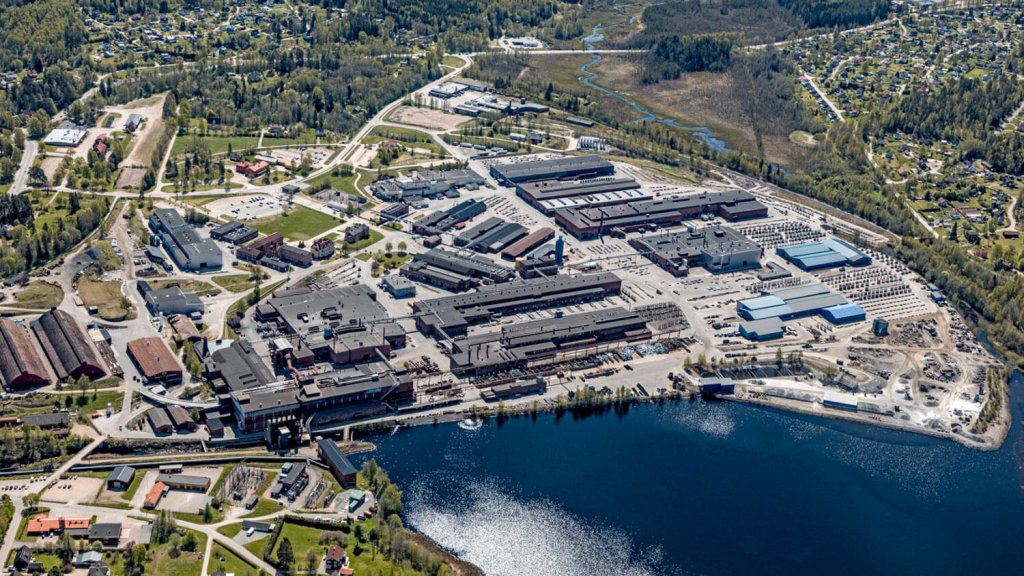Decarbonization: Reducing greenhouse gas emissions for a positive effect on the environment
Significantly reducing our emissions is one of the High Performance Metals (HPM) Division’s explicit goals. Reducing Scope 1 and 2 emissions is therefore a key area of action under the Climate Impact pillar of our inSPire sustainability framework. And a wide range of measures are bringing us closer to that goal: ambitious decarbonization roadmaps and real-world projects for greater energy efficiency, less natural gas, and an increased use of renewable energies.
DECARBONIZATION = SUSTAINABILITY?
To begin with, we need to clarify what decarbonization means to us: To us, it means a 50% reduction in our Scope 1 and 2 emissions compared to the base year 2019. By 2050, we are even aiming for climate neutrality in our production processes. In a previous article, we gave an overview of the importance of scope classifications. But what does the distribution look like for us at HPM?
As is the case for many companies, our largest share of emissions falls under Scope 3. These account for around two thirds of our total emissions. This figure has risen steadily over the past few years due to the ever-improving availability of data for comparison. The category includes indirect greenhouse gas (GHG) emissions from sources that we do not own or control. These primarily include emissions from raw materials and logistics. Scope 3 emissions are addressed by the Sustainable Sourcing pillar of inSPire.
Scope 1, or direct emissions, are in second place by some distance. These mainly include emissions from the use of natural gas and process emissions from our mills. We can influence these emissions directly, which makes them an important instrument for change.
Finally, just behind, emissions from Scope 2 represent the smallest share in the division. They relate specifically to emissions from the use of electricity at our sites.
A major lever for reducing Scope 2 emissions is offered by our Value Added Services (VAS) companies, which are spread out around the world and can therefore make a big difference internationally. Here, too, we are driving forward the increased use of green electricity. One of the main challenges is related to location. The supply and availability of green electricity varies greatly by country. It can also depend on local electricity suppliers’ decarbonization efforts. This is another reason for us to increase our energy efficiency and drive forward an independent supply of electricity through internal projects.
With targeted measures, we want to reduce our emissions significantly over the next few years to reach zero by 2050. We aim to achieve this primarily by reducing energy consumption and using renewable energy sources. Only if there are demonstrably no other options for reducing CO2 will we consider carbon capture technologies (i.e., CO2 separation methods) or internationally recognized and certified compensation measures.
MANY ROADMAPS LEAD TO THE GOAL
Our goal is to reduce our Scope 1 and 2 emissions as mentioned above and to manufacture products with a low greenhouse gas (GHG) footprint in the long term. A clear and precise roadmap for the division will lead us there. Key factors include the development of new technologies through research as well as process optimization.
All our plants and VAS regions have their own decarbonization roadmaps, which are adapted to the different circumstances and needs of each site. These represent specific plans up to 2029 to support the division’s long-term goals. We continuously review new developments and progress in relation to these.
A central role in enabling decarbonization is played by the more efficient use of energy. We are therefore pursuing a roadmap for greater energy efficiency. We are also investing heavily in the expansion of sources for green electricity. Photovoltaic plants are particularly important in this respect, as is the use of wind energy.
We will report more on the topics of energy efficiency and green electricity in upcoming Climate Impact articles.

ALTERNATIVES TO NATURAL GAS
On the road to decarbonization, we are increasingly pursuing the use of alternatives to natural gas. Currently, natural gas is the most important energy source for us, followed by liquefied natural gas (LNG) and electricity.
We are evaluating various options to replace natural gas:
Biomethane or synthetic gases are a good alternative. Because of their similar properties to natural gas, they can be used as alternative fuels in many processes, thus saving CO2.
In principle, green hydrogen (H2) is also suitable for this purpose. However, its volumetric energy content is two-thirds lower than that of natural gas. Additionally, the use of hydrogen changes the atmosphere (composition of the ambient air) in the furnace, which is why possible effects on the products, processes, and furnace systems are currently being evaluated through tests.
Likewise, carbon-neutral electrical energies are being reviewed as alternatives to natural gas. However, these are usually accompanied by high investment costs in the conversion of furnace technologies, electrification, research, and development. We are pursuing a project on hybrid furnaces in collaboration with one of the leading manufacturers of industrial furnace equipment. Besides, we have several studies on induction heating in the preparation phase.
Carbon capture is a technology for the capture and reuse of CO2, which has so far been unusual in the steel industry. This involves removing CO2 from the waste gas stream and then converting it into another product (carbon capture and utilization, CCU) or storing it underground (carbon capture and storage, CCS). The process is particularly challenging with many decentralized sources of CO2, as is the case with the furnace systems at our sites. A collaborative project and a feasibility study in relation to this are also in preparation, focused on reheating furnaces. However, this method is difficult to implement under current circumstances.
CHALLENGES AS DRIVERS OF INNOVATION
We can see: There are many different approaches to making decarbonization possible, but each one brings with it new challenges. In some cases, very high costs are incurred for new processes, research, and development. The infrastructure also often must be created first—for wind turbines, for example. These often involve time-consuming approval procedures. We will report more on the topic of wind energy and what role it plays for us at HPM in a subsequent article.
With all innovations, it is crucial that we consistently ensure the usual high quality of our products. Other energy sources, such as H2, can change the product quality. Since the majority of our furnaces are directly fired, the hydrogen comes into contact with the product and the furnace atmosphere changes. This can lead to different and even undesirable chemical reactions.
We see these challenges as new drivers for innovations that will benefit us as a company and the environment in the long term.
JOINT RESEARCH AT NEFI
Challenges and issues relating to decarbonization affect not only us, but also many other companies and organizations. It therefore makes sense to strive together for solutions to these challenges. That is why we are part of the NEFI (New Energy for Industry) Innovation Network. Together with more than 80 other companies from sectors as varied as food and steel, many research and institutional partners, the University of Leoben and the Austrian Institute for Technology (AIT), numerous experts are dedicated to the field of energy research. Decarbonization is also a top priority for this consortium. It thus supports us in research around this topic and allows us to implement innovative projects.
UDDEHOLM – YET ANOTHER STEP AHEAD
A prime example in terms of decarbonization is our subsidiary Uddeholm in Hagfors, Sweden. At this site, we have set the ambitious goal of producing climate-neutral tool steel. Pär Emanuelsson, CEO of Uddeholm, explains the ambitious approach: “We have reduced our fossil-based CO2 emissions by 50% since 1990. That is good. But it is not enough. We are now stepping up the pace and have decided to achieve fossil-free production in Hagfors by 2030. We take our responsibility seriously, both to ourselves and the world around us and to future generations.”
The roadmap to achieve this is divided into three major steps:
- Fossil-free production and a significantly reduced carbon footprint in distribution by 2030
- A climate-neutral value chain by 2035
- A climate-neutral life cycle by 2040
Along the way, there are many detailed sub-targets that define how each step will be achieved. More information can be found in Uddeholm’s sustainability report.
Half of the natural gas demand at the Hagfors site has already been replaced by biogas. Additionally, 100% of the electricity comes from fossil-free sources. Water management also plays an important role: 80% of the water used for process cooling is “borrowed” and returned to the source—without any contact with the production processes. The remaining 20% is cleaned and returned to nearby Lake Värmullen. This process is subject to constant strict controls to guarantee water purity and operational safety.

PROFIT AT EVERY LEVEL
Changing our processes and looking for innovations involves a lot of effort, but we are very happy to do it. Why? Because it is important to us to operate in a sustainable manner and to do everything we can to mitigate any negative impact on the environment.
This also brings economic advantages. By looking for alternative energy sources and using them as efficiently as possible, we gain independence from international markets, for example, in terms of natural gas. These markets are usually subject to fluctuations in prices and availability due to international competition and political conditions. By adopting a more differentiated approach to energy and thus becoming a little more independent, we are not only doing something good for the environment, but also ensuring a secure supply of high-performance materials for our customers in the future.
